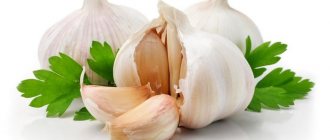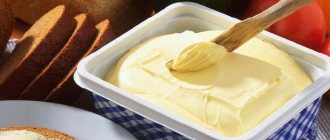Every nursing mother is extremely attentive to her diet, trying to eat only the healthiest and most wholesome foods. Such a strict approach to nutrition is due to the fact that everything that the mother eats enters the newborn’s body through breast milk. That is why nursing women should pay special attention to their diet. This time we’ll look at whether liver can be used during breastfeeding (BF), and what benefits this product provides.
The liver product is deservedly considered one of the most useful. It has many positive properties, and it contains vital vitamins and microelements. Women also wonder whether it is possible to consume cod liver while breastfeeding, as well as pork and chicken liver.
Benefits and harms of the liver during breastfeeding
Offal dishes are included in the diet developed by the World Health Organization. Any type of it contains a lot:
- easily digestible protein. It is a building material for cells. Protein ensures complete absorption of vitamins and minerals from food.
- gland. This element is well absorbed from the dish due to the content of vitamins C and B12. The substances increase each other's absorption. During lactation, foods with a high concentration of iron prevent the development of anemia in mother and child.
- B vitamins. They are responsible for metabolism and support energy metabolism.
- vitamin A, which restores the condition of skin and hair. This element is also responsible for visual acuity.
- nicotinic acid (vitamin PP). Lack of the substance leads to nervous exhaustion and digestion is impaired.
In addition to these elements, the product contains amino acids, phosphorus, cobalt, selenium, molybdenum and other substances important for the development of the baby. They enrich breast milk. At the same time, the mother’s body does not suffer from their deficiency.
One serving of the offal replenishes the daily requirement of vitamins A, B2, B12, cobalt, iron, and selenium. To get the maximum benefit, the dish is steamed or stewed.
Scientists have found that fish and animal by-products help remove toxins from the body. This allows you to protect the body of mother and child from a number of diseases.
The cod delicacy differs from the same animal by-product, poultry. It contains less iron and B vitamins, but a lot of vitamin D and Omega-3 and 6 fatty acids.
In some cases, the liver can harm a nursing woman. It contains cholesterol, the amount of which increases significantly during frying. Women with chronic heart and vascular diseases need to remember this. A record amount of selenium in the composition can cause harm due to increased synthesis of thyroid hormones produced by the thyroid gland. For this reason, women with hormonal disorders should not eat the product often. Pork and cod liver during breastfeeding can cause exacerbation of chronic gastrointestinal diseases. These types are quite high in calories and fat.
In infants, the liver rarely causes digestive disorders or allergies. If a nursing woman loves offal dishes and tolerates them well, the baby will only benefit from them.
Which one to choose
Let's figure out whether a nursing mother can have all its types and which ones are better to give preference:
- Pork liver is allowed, as any other liver contains useful microelements B-12 and A, which vitamins improve the function of blood vessels, as well as blood supply to the brain. You should be careful in preparation, because the fried delicacy has a completely different chemical composition. When frying, under the influence of high temperatures, substances disintegrate, forming carcinogens.
- Beef and chicken have a similar valuable biological composition. It has a high protein and iron content. They are more dietary representatives. Frying is also prohibited.
- Cod. Here opinions are divided. The first say that the offal can harm the baby’s nervous system, the second argue that fish oil, or rather its presence in sufficient quantities, is necessary for a woman. Omega-3 fights the appearance of atherosclerotic plaques, normalizes blood pressure, and lowers cholesterol. This type of liver is not strictly prohibited for a nursing mother, but consumption must be agreed with a doctor.
After a cesarean section, it is better to abstain from this offal until the gastrointestinal tract improves.
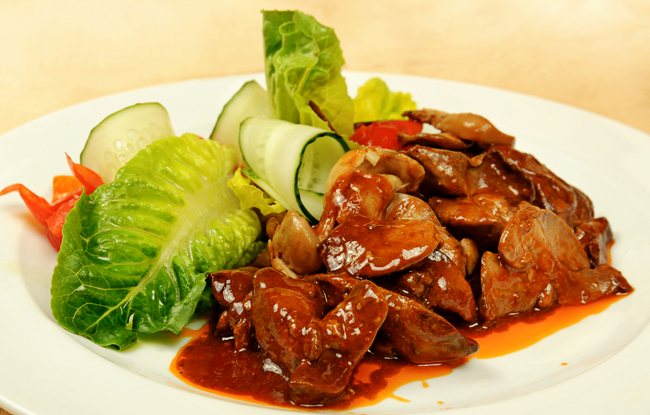
What type of liver is preferable for breastfeeding?
Turkey is considered the least allergenic dish, but it is difficult to get. During the first months, it is better for a nursing mother to choose a beef option. This type of product, from the point of view of nutritionists, is considered the most useful and safe for lactation.
Beef liver during breastfeeding
Beef liver has the most valuable properties. I include it in my diet immediately after giving birth. Doctors often recommend eating beef offal to nursing women suffering from anemia. To provide the body with valuable elements, it is enough for a woman to consume 100 g of liver per day. The nutritional value of the stewed product is only 125 kcal per 100 g, so it can be eaten without harming your figure.
Is it possible to have chicken liver while breastfeeding?
Poultry is slightly inferior to beef in terms of vitamin D, antioxidants and fatty acids. But chicken liver contains more vitamin A and selenium. During breastfeeding, this product normalizes mother’s digestion and improves memory. The vitamins and minerals in the composition have a beneficial effect on the baby’s mental abilities and skeletal development. The amount of iron in the dish is not inferior to beef, so it is useful to eat it for anemia.
The product is low-calorie: per 100 g there are 136 kcal. It can be introduced into the diet from the first month of lactation.
Turkey liver is less likely to cause allergies in infants, but contains fewer B vitamins. It contains much more calories than a chicken product. It is recommended to introduce goose and duck by-products into the menu after 6 months of lactation. They contain a lot of fat, so the baby may have digestive problems.
Pork liver for nursing mothers
This product is recommended to be administered 3-4 months after delivery. Pork liver has no more calories than beef liver. According to nutritionists, the offal is less easily absorbed by the gastrointestinal tract. After childbirth, it can cause digestive problems in mother and baby.
Contraindications for use
It is best to introduce cod liver into the diet of a nursing mother only when the baby is 3-4 months old. It is characterized by high fat content, and therefore the child’s body simply cannot cope with digesting the heavy product.
It should be remembered that the liver contains a huge amount of proteins that place an increased load on the kidneys of a nursing woman. It is for this reason that it is best for people with various kidney problems to avoid eating pork, beef, or chicken liver.
But these are not all contraindications to consuming meat or fish products. It contains cholesterol, which can provoke the development of various cardiovascular pathologies. Therefore, if there is a high level of cholesterol in the blood, liver consumption is not recommended.
Cod liver during breastfeeding
The main value in this dish is vitamins D, E, and fatty acids. Cod liver is very useful from a nutritional point of view, because it contains substances necessary for the functioning of the immune system and blood vessels. Fatty acids improve skin condition and promote cell renewal. Vitamin D is very important for the proper development of the baby’s skeleton, as it helps to absorb calcium from milk.
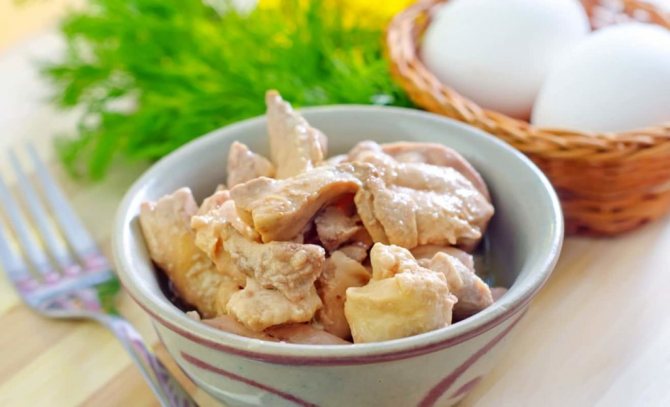
Cod liver is a very healthy dish, but due to its fat content, it is not recommended for consumption in the first months of lactation.
The canned dish contains 613 kcal per 100 g. It contains a lot of fat and salt. The baby's digestive system has a hard time tolerating such foods. There are not enough enzymes in the intestines for their complete absorption. It is advisable to postpone the consumption of cod by-product until the baby is 6 months old.
Beneficial features
Unlike meat, liver is less fatty. The body digests offal more easily than whole beef or chicken. At the same time, it is not inferior in usefulness to meat. The product contains a lot of useful vitamins and macroelements. They ensure the normal functioning of the nursing mother’s body and help recover after childbirth. Nutrients promote the growth and development of the baby.
| Elements | Action |
| B vitamins | They are responsible for almost every action in the body, promote metabolism, growth and development of the baby. |
| Vitamin A | Maintains visual acuity, improves skin and hair condition. |
| Vitamin C | Forms and strengthens the immune system. |
| Folic acid | Forms and develops nerve cells. |
| Calcium | Strengthens bones, promotes growth and strengthening of nails. |
| Sodium | Maintains a normal balance of substances in the body. |
| Zinc | Forms the bone skeleton, promotes rapid healing of wounds. |
| Iron | Forms hemoglobin in the blood, triggers and normalizes the functioning of B vitamins |
| Copper | Promotes normal functioning of the respiratory and nervous systems, participates in protein synthesis |
One serving of liver will provide the daily requirement of amino acids. Such dishes are quick and easy to prepare, which is very important for a nursing mother who does not have enough time. This is tasty and healthy food.
How to introduce liver into the diet of a nursing mother
Breastfeeding is a crucial period in a woman’s life. New products are tried, starting with a small piece, so as not to harm the baby. Chicken and beef liver are administered in the first month of lactation. For the first time, try a few pieces. The reaction may not appear immediately.
If after consuming the baby has negative reactions within two days - problems with stool, rash, anxiety, introduction to the product is postponed for 1-2 weeks.
A large amount of liver can be harmful. It is enough to use it 1-2 times a week.
Rabbit liver
Is it possible to breastfeed rabbit liver, since it is also an offal, and the meat itself is very healthy? You need to be careful with this ingredient, because it is rabbit liver that most often causes allergies in children. Although, on the other hand, it is healthy, and one serving can enrich the body with amino acids for the whole day.

The product is introduced into the diet, just like pork or cod, no earlier than when the child is 3 months old. It is easy to prepare dishes based on offal and it is best to initially soak it for about an hour, and then stew it in sour cream and with the addition of vegetables.
How to choose and prepare liver for breastfeeding
The offal spoils quickly. This should be taken into account when choosing packaging. It is advisable to buy the chilled version. The pieces should be smooth, without inclusions. Color – dark red. The cooled liver is prepared on the same day or placed in the freezer.
Beef liver is sometimes bitter. This is its disadvantage. To get rid of bitterness, the pieces are pre-soaked in water or milk. Prepared meat is ideal for salads, pates, casseroles, and cold appetizers. Whole pieces are cooked for 40 minutes. The crushed product is simmered for 7-10 minutes until the liquid stops releasing.
Chicken liver is less “whimsical”. It does not need to be soaked before cooking.
Before preparing dishes, the pieces are washed, films and veins are removed. After this, the product is dried with paper towels.
The product, according to the diet of a nursing mother, is consumed stewed or boiled. During the frying process, some of the beneficial properties are lost and harmful cholesterol is added.
Chicken liver pate
The product is well absorbed in pureed form. Store-bought pate contains preservatives and additives, so it is better to prepare the dishes yourself. Ingredients:
- chicken liver – 0.5 kg;
- 2 boiled eggs;
- 1 glass of natural yogurt (preferably low-fat);
- a little salt;
- greens (dill, parsley).
The offal is placed in boiling water for 5-10 minutes. The water is drained. Boiled eggs and liver are passed through a meat grinder or crushed in a blender. The mixture is mixed with yogurt, salt, chopped herbs. The resulting mass is cooled. The pate is stewed with vegetables, added to cutlets or spread on bread.
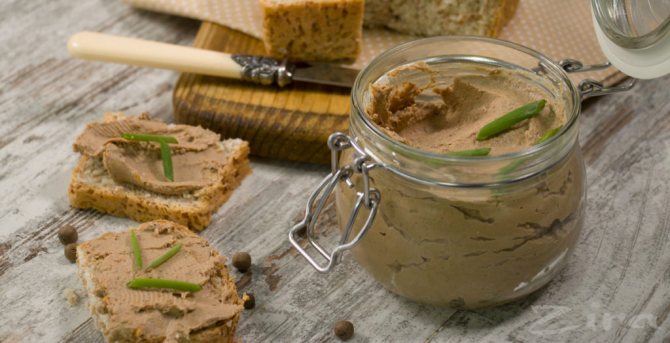
It is with a self-prepared pate that you can begin to “acquaint” your baby with the liver.
Liver pancakes
The dish can be prepared without oil in a non-stick frying pan. Ingredients:
- beef liver – 0.5 kg;
- 3 tablespoons flour;
- 1 tablespoon sour cream;
- salt.
The by-product is ground with a meat grinder and mixed with the rest of the ingredients with a spoon. The result is a thick dough. Spoon it onto a dry, heated frying pan. Pancakes are fried on both sides for 2 minutes. The finished dish is sprinkled with herbs.

Easy to prepare chicken liver pancakes will usefully diversify the diet of a nursing mother.
Liver stewed in sour cream
For half a kilo of offal take:
- 3 carrots;
- 1 onion;
- 2 tablespoons sour cream;
- glass of water;
- salt;
- a tablespoon of flour;
- dill.
The onion is cut into half rings. The carrots are chopped with a coarse grater. Vegetables and liver are placed in a frying pan and simmered for 10-15 minutes. When the offal stops releasing red liquid, add salt, dill, sour cream, and flour. The dish is simmered under the lid for another 15 minutes. After turning off the stove, leave it for 5-7 minutes. The dish goes well with vegetable puree, rice, and buckwheat.
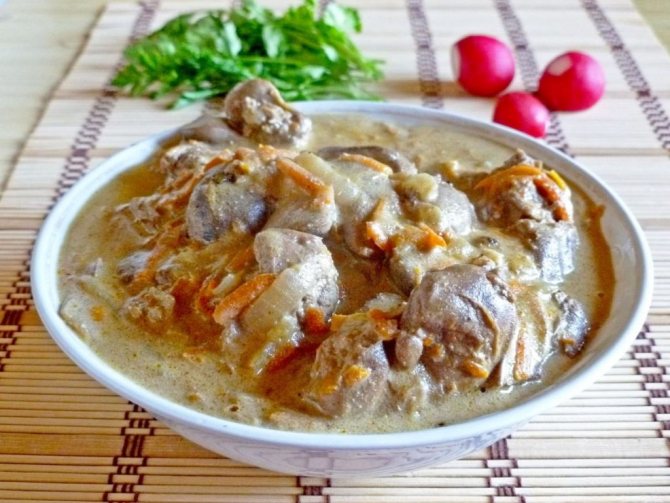
Liver stewed in sour cream with vegetables is an indispensable dish in the diet of a nursing mother.
Chicken and beef liver are valuable and safe products for breastfeeding. You can prepare many dishes from them that will benefit mother and baby.
What to cook
It is important to understand that during culinary experiments only a few types of processing are allowed: baking, stewing and boiling. You should not use a lot of spices or add industrial sauces of questionable composition.
Here are dietary options that are suitable for a young mother while breastfeeding and will not take much time:
- Boiled with white sauce. Boil half a kilogram of the main ingredient in lightly salted water until tender, cut into arbitrary pieces. Serve with a sauce of sour cream, onion and broth (all components must be simmered together for 15 minutes, adding a little salt and pepper).
- Baked with vegetables. Pre-soak the chopped offal slices in milk, after a while squeeze out excess liquid and place in the oven (wrapped in foil), cook for ten to fifteen minutes. Serve with separately baked or boiled vegetables (carrots, cauliflower, zucchini, broccoli and others).
- Hearty casserole with rice. Grind the offal (450 g) with onion until minced, add boiled rice (100 g) to the mixture. Beat in the egg and add some spices. Pour the mixture into a suitable baking dish, greased with a small piece of butter. You need to bake for an hour, monitoring the readiness of the dish and focusing on your oven.
Every woman carefully monitors her diet when breastfeeding. After all, the substances that the mother consumes enter the baby’s body along with breast milk. Sometimes the effects of these substances harm the baby.
During the first months of life, a newborn’s body is still weak and can react sharply to new food. This may include allergies, colic, digestive disorders, anxiety and sleep disturbances.
Liver is an offal with beneficial biological properties, which includes a large amount of protein, iron proteins and ferritin. They saturate the body with hemoglobin, energy and other necessary elements.

